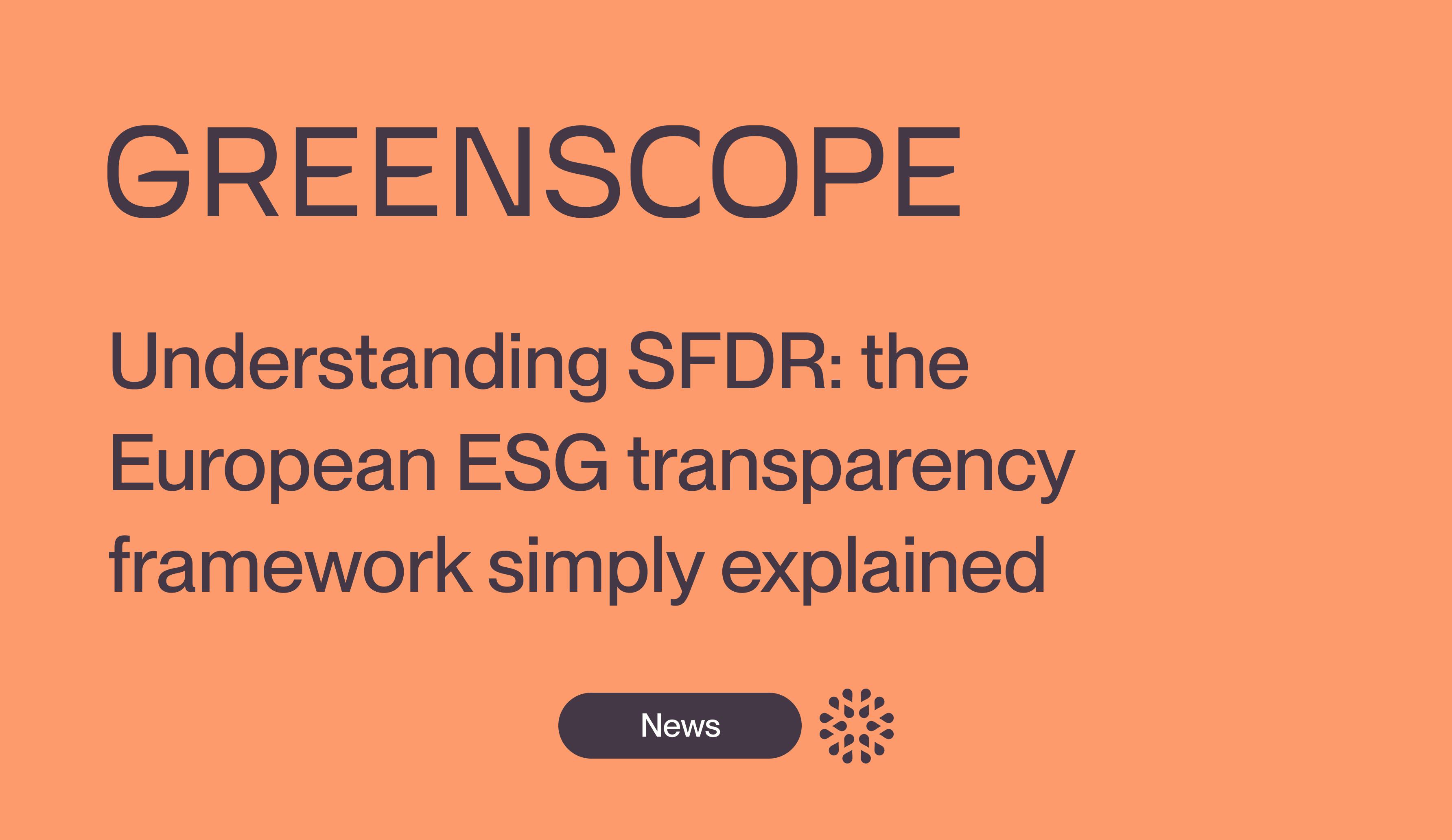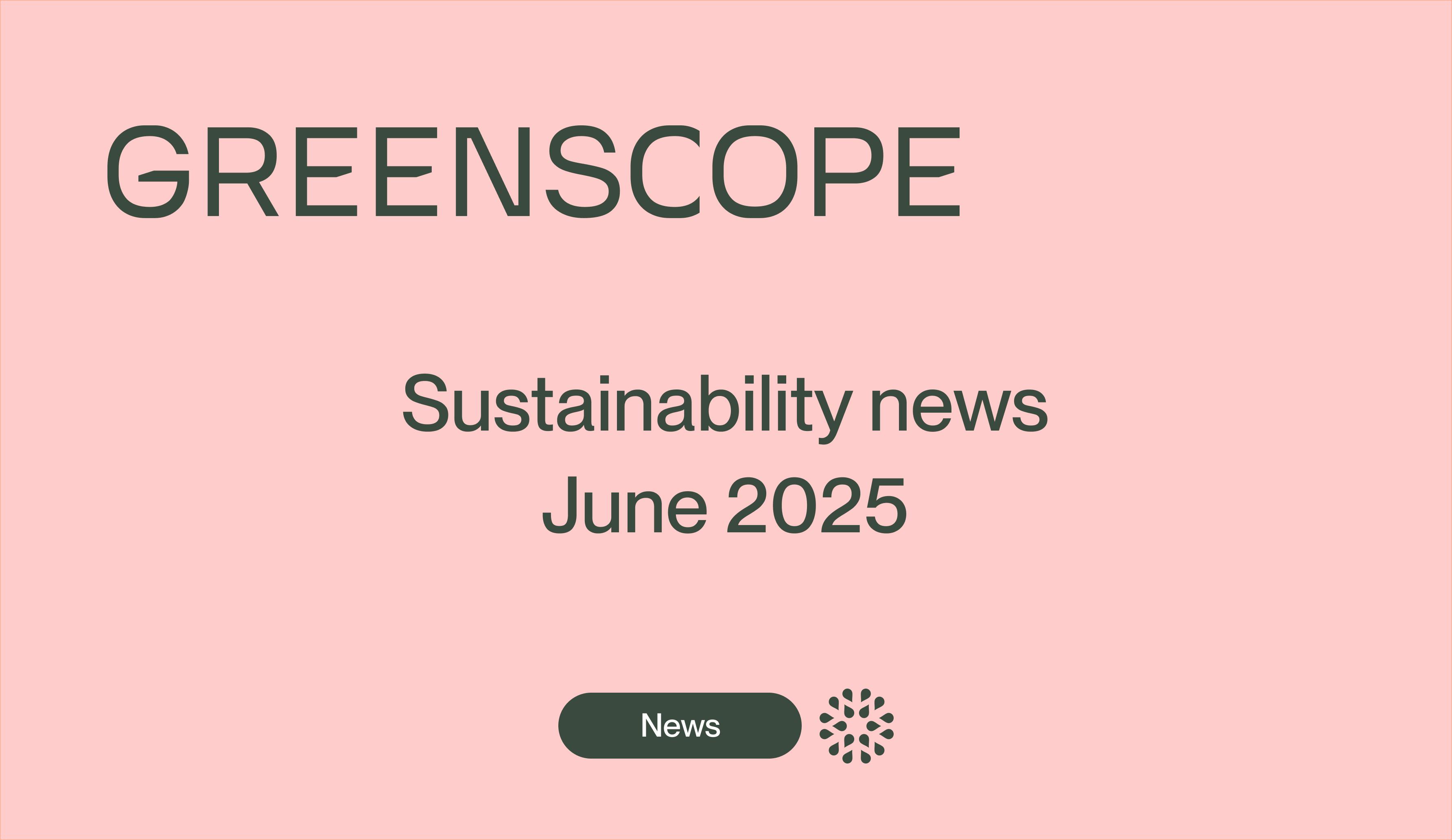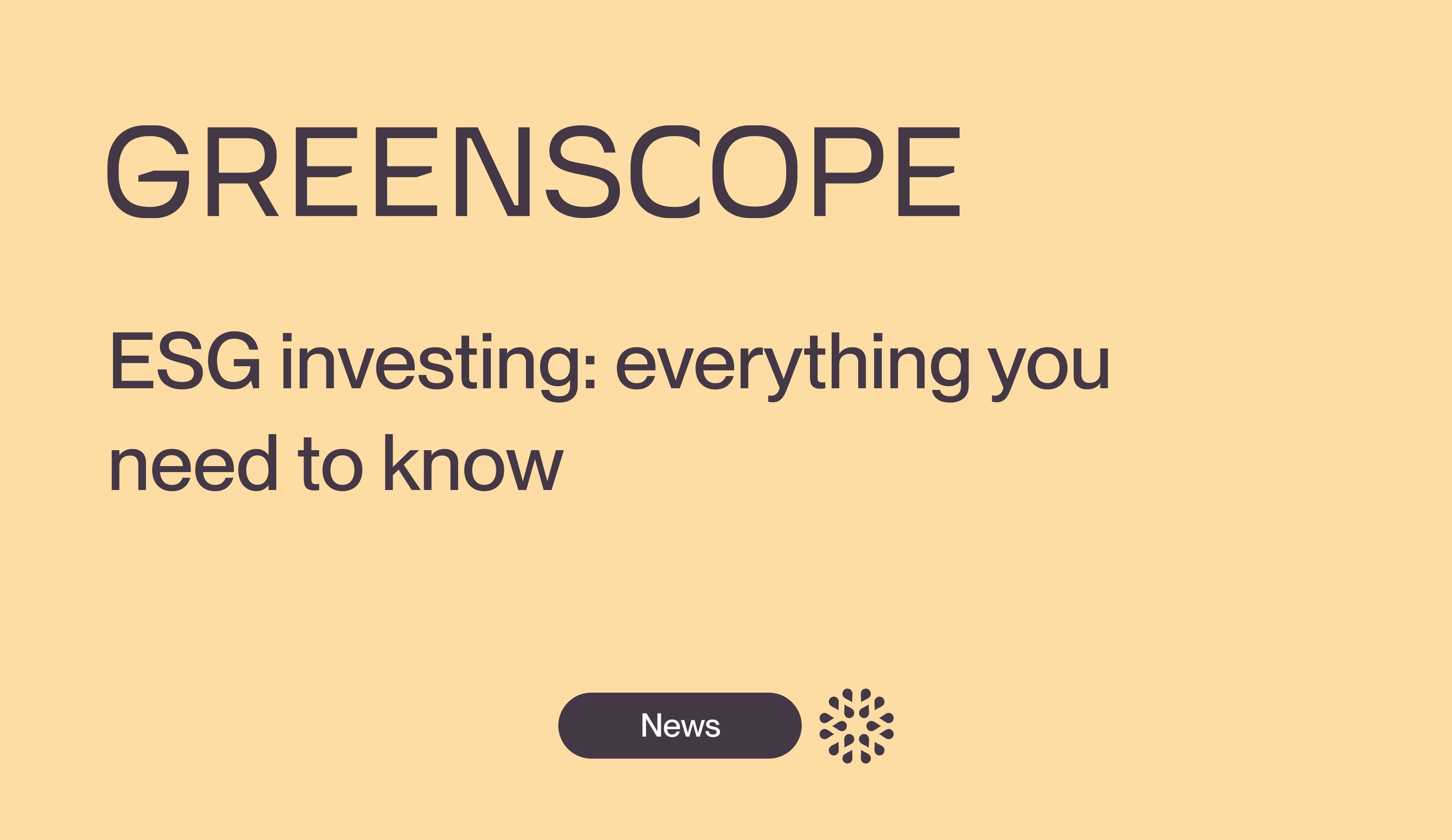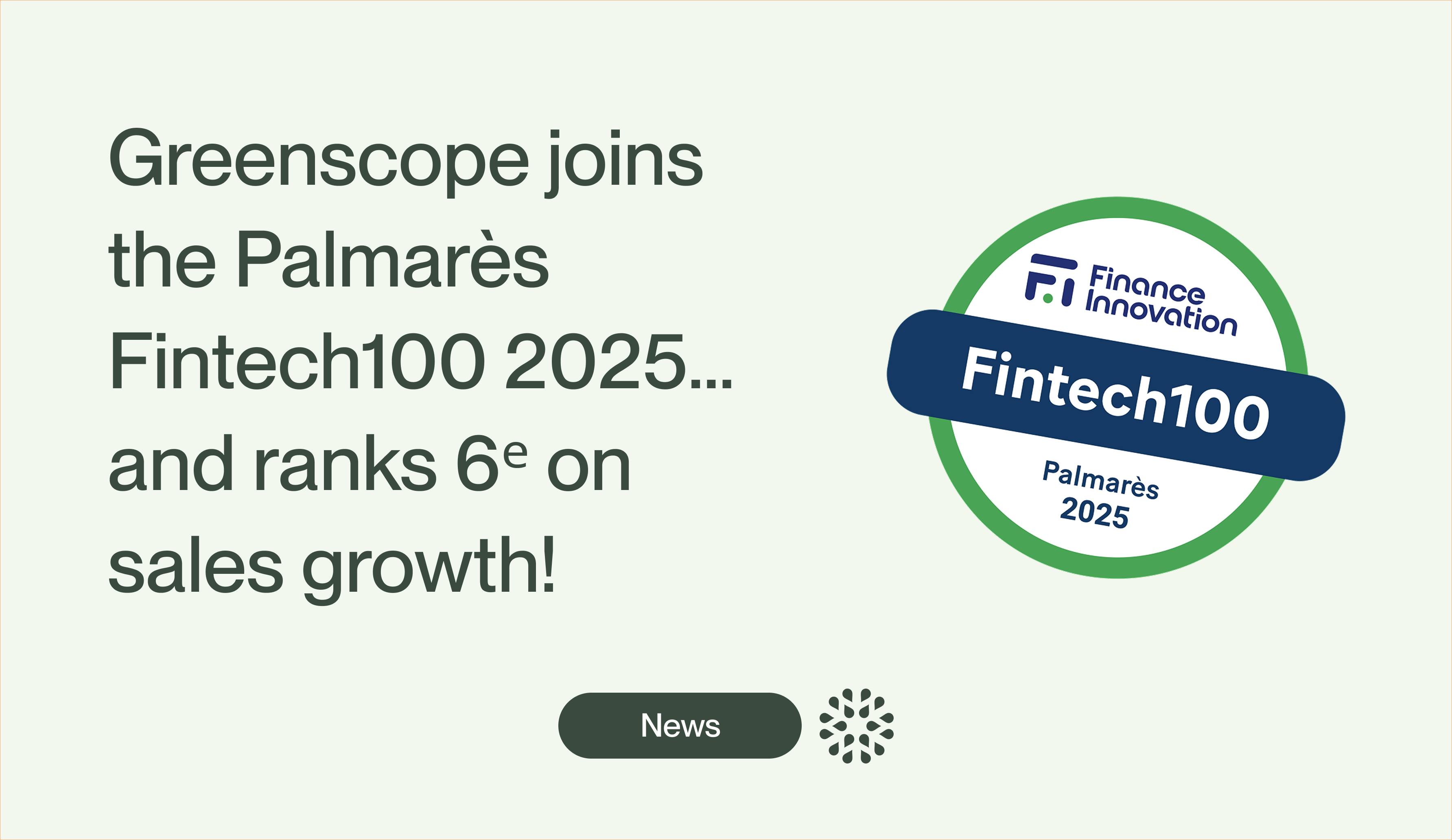Understanding SFDR: The European ESG transparency framework made simple
Understanding SFDR means understanding what structures sustainable finance in Europe. Requirements, tools, impacts: let's break it down.

In the face of climate emergency, growing social issues, and the increasing demand for financial transparency, the European Union has implemented the Sustainable Finance Disclosure Regulation—or SFDR.
Effective since March 2021, this regulation requires asset management professionals—management companies, banks, insurers—to provide clear and harmonized information on whether or not they consider ESG (environmental, social, and governance) criteria in the investment products they offer.
The goal is twofold: strengthen transparency for investors and fight greenwashing by regulating sector practices.
What is the SFDR?
The SFDR (Sustainable Finance Disclosure Regulation) is a European regulation that requires financial actors to publish clear and standardized information on the sustainability of their investment products, to improve transparency and combat greenwashing.
The SFDR regulation was initiated by the European Commission as part of the Action Plan for Sustainable Finance launched in 2018. It is part of a broader set of regulatory texts, linked to the European Taxonomy and the CSRD directive on corporate sustainability reporting. The aim is to allow investors to compare financial products by their ESG (environment, social, governance) performance, while encouraging asset managers to integrate these issues into their investment decisions.
This article provides a comprehensive breakdown of the SFDR regulation: who is covered, what the “Article 6”, “8”, or “9” labels really mean, and how they help guide your choices in responsible investing.
First, SFDR operates in an environment filled with key terms. Here are some definitions to help you better understand:
- PAI (Principal Adverse Impacts): Indicators measuring the significant negative effects an investment can have on sustainability factors (e.g., GHG emissions, human rights violations)
- RTS (Regulatory Technical Standards): Technical standards defining the format, content, and presentation of information to be disclosed under SFDR
- Pre-contractual documentation?
- Periodic documentation?
- Sustainability Risk: The risk that an ESG event might significantly negatively impact the value of an investment
- European Taxonomy: Official classification of economic activities considered environmentally sustainable
- Disclosure: Required publication of information. In the context of SFDR, this is about openly stating how (and if) ESG criteria are integrated into investment strategies
- EET (European ESG Template): Standardized format for ESG data exchange among data providers, distributors, and asset managers in Europe
Who is affected by SFDR?
The SFDR regulation applies to a wide range of financial sector players operating in the European Union. It primarily concerns financial market participants (FMPs) and financial advisers, including:
- Asset management companies (UCITS, AIFs, alternative investment funds)
- Insurance companies offering insurance-based investment products
- Credit institutions marketing savings or investment products
- Pension funds and occupational retirement institutions
- Independent or tied financial advisers who recommend financial products to clients
These actors must publish precise information on their sustainability policy, the ESG risks associated with their investments, and the potential negative impacts of their investment decisions (PAI—Principal Adverse Impacts).
It's important to note that even players who do not integrate ESG criteria into their investment strategies are still subject to transparency obligations: they must state this explicitly and justify their choice. In this sense, SFDR does not make sustainable investing mandatory, but it does require clear disclosure of intentions and standardizes sustainability-related communications.
Finally, although SFDR applies to European actors, it also has extraterritorial effects: non-European entities that wish to market financial products in the EU must also comply with certain regulation requirements.
Which financial products are affected?
The SFDR regulation applies to all financial products offered to investors by financial sector players. This includes a wide range of instruments, as long as they're marketed in the European Union. Specifically covered are:
- Investment funds (UCITS, AIFs)
- Unit-linked life insurance products
- Occupational or individual pension products
- Discretionary portfolio management
- Securitization products
- Certain structured products and derivatives, if offered under collective management or within an investment framework
Thus, SFDR is not limited to so-called “green” or explicitly ESG-labelled products. It applies to all financial products, whether or not they include sustainability criteria. The central aim of the regulation is to clarify each product’s ESG position, requiring managers to declare, according to common standards, if they take ESG factors into account, to what extent, and with what objective.
Accordingly, all products must be classified into one of three categories, as defined by SFDR Articles 6, 8, and 9:
- Article 6: products with no ESG goal or commitment to consider sustainable criteria
- Article 8: products promoting environmental and/or social characteristics
- Article 9: products with an explicit sustainable investment objective
This classification must be stated in the pre-contractual and periodic product documents (prospectus, KIID, reports). It lets investors compare products by ESG engagement level, in full transparency. To learn more, check out our dedicated article (link to Article 6,8,9 feature).
What are the regulatory tools associated with SFDR?
To ensure the effective and consistent implementation of SFDR, several regulatory tools and technical frameworks have been created in addition. These instruments standardize reporting, enable comparison between products, and facilitate interoperability with other sustainable regulations.
- RTS (Regulatory Technical Standards): These specify how financial players must present their SFDR information. They define the document format and structure, required indicators, and calculation methodologies for sustainability impacts. RTS are essential for understanding SFDR reporting content.
- PAI (Principal Adverse Impacts): This is a set of indicators assessing the potential negative ESG impacts of a financial product (for example: CO₂ emissions, water consumption, human rights violations). Since 2023, publishing a PAI report has been mandatory for large entities.
- Link with European Taxonomy: SFDR and the Taxonomy are two complementary pillars of European sustainable finance. While the Taxonomy identifies the economic activities considered environmentally sustainable, SFDR indicates if—and to what extent—a product invests in them. Together, they strengthen transparency and credibility for green products.
- Interoperability with other frameworks: SFDR is designed to work with other regulatory or voluntary initiatives, such as: CSRD (Corporate Sustainability Reporting Directive): Corporate sustainability reporting; GRI (Global Reporting Initiative) and ISSB (International Sustainability Standards Board): international sustainability standards; TCFD (Task Force on Climate-related Financial Disclosures): a climate disclosure framework focused on risk
This interoperability aims to avoid fragmentation of ESG standards and facilitate dialogue between companies, investors, and regulators.
What is the impact on transparency requirements?
Implementing the SFDR regulation has greatly increased transparency obligations in the financial sector at several levels.
At the entity level, management companies must now publish their policy for integrating sustainability risks, explaining how environmental, social, and governance (ESG) issues are considered in their investment decisions. They must also state their position on the main negative impacts (PAI—Principal Adverse Impacts) their investments may have on sustainability factors.
At the financial product level, SFDR requires all products to be classified by ESG commitment (article 6, 8, or 9) and for this categorization to be reflected in pre-contractual documents (like the KIID) as well as in marketing communication. This provides investors with clear information about the sustainability features of the products on offer.
Finally, companies must describe how sustainability risks are integrated—explaining how ESG risks are evaluated, incorporated, and may affect a product’s financial return. This increased transparency aims to limit greenwashing and promote more responsible capital allocation.
Examples of SFDR purposes and uses
These requirements serve several purposes—the SFDR (Sustainable Finance Disclosure Regulation) was designed as a structuring tool to steer financial markets toward greater sustainability. It pursues several practical aims, both for financial actors and investors.
First, SFDR aims to improve information for investors. Thanks to harmonized disclosure on the ESG features of financial products, savers can more easily compare investments available in the market according to their alignment with environmental, social, or governance criteria. This increased transparency allows clients to invest in line with their values and sustainability preferences.
Next, SFDR introduces an official classification system for funds, based on three categories (article 6, 8, and 9). This system clearly differentiates products that do not consider ESG criteria (article 6), those that integrate them significantly (article 8), and those that aim for an explicit sustainable investment objective (article 9). This categorization clarifies each product’s ESG positioning and makes building sustainable portfolios easier.
Another key SFDR objective is fighting greenwashing. By requiring asset managers to provide detailed and standardized justifications for all ESG claims, the regulation strictly regulates marketing communications. This reduces the risk of misleading or exaggerated claims about the true sustainability of financial products.
SFDR also plays a role in aligning financial flows with the EU’s climate goals, in particular carbon neutrality by 2050. By imposing disclosure on investments’ negative impacts (PAI) and coordinating requirements with other frameworks like the European Taxonomy, the regulation encourages identification and financing of genuinely sustainable economic activities.
Finally, on a broader macroeconomic scale, SFDR helps redirect capital toward sectors key to the ecological and social transition, in line with the European Green Deal. In this sense, it is more than a reporting tool: it's a lever for transforming the financial system.
Latest SFDR Updates
The SFDR (Sustainable Finance Disclosure Regulation), effective since March 2021, has undergone several review stages. Some European institutions—including the European Commission, AMF (Autorité des Marchés Financiers), IFD (Institut de la Finance Durable), and its German counterpart SFB—have issued official positions calling for the framework to be strengthened and clarified.
A recognized need for reform
In July 2023, the European Commission launched a public consultation on revising the SFDR regulation. This aims to address shortcomings identified during initial implementation: legal uncertainties, too much room for interpretation in articles 6, 8, and 9, complex reporting requirements, and practical difficulties for financial players.
February 2024 – AMF position statement
In response, the AMF published a position paper in February 2024, calling for an overhaul of the SFDR with two main priorities:
- Clarification of product categories: introducing objective, verifiable criteria to govern the categorization of financial products by their ESG commitment level.
- Simplifying transparency obligations by focusing requirements on information relevant to investors and ensuring alignment with other EU regulations (CSRD, Taxonomy, ESRS…).
The AMF emphasizes that SFDR must remain a key comparison tool between products, not create needless reporting.
June 2024 – Joint French-German position (IFD & SFB)
IFD (France) and SFB (Germany) released a joint position stressing the importance of:
- Strengthening cohesion among sustainable finance texts, especially between SFDR, the European Taxonomy, and the CSRD
- Clarifying the notion of sustainable investment, currently too vague, by explicitly including the idea of transition as a central pillar.
- Reducing current interpretive leeway that hampers concrete implementation of the regulation by financial players.
The paper underscores the need for stricter definitions and harmonized standards at the European level to guarantee SFDR’s robustness and credibility.
In parallel: technical work continues
The update of the RTS (Regulatory Technical Standards), initially released in 2022, has been revised to add new—especially social—indicators and further standardize reporting. The new RTS version comes into effect from January 2025.
The Commission is also considering the idea of a new product classification system based on four categories:
- Neutral products (formerly article 6)
- Products promoting ESG characteristics (formerly article 8)
- Products with a sustainable objective (formerly article 9)
- Transition or impact products (new proposed category)
This review aims to better reflect the diversity of ESG approaches while more effectively fighting greenwashing.
Our latest articles

Understanding SFDR: The European ESG transparency framework made simple
Understanding SFDR means understanding what structures sustainable finance in Europe. Requirements, tools, impacts: let's break it down.

CSR News - June 2025
Discover key developments: ongoing projects, standards updates, new official documents.

ESG Investing: Everything You Need to Know
Performance, compliance, resilience: ESG investing is becoming essential for financial professionals with a long-term perspective




